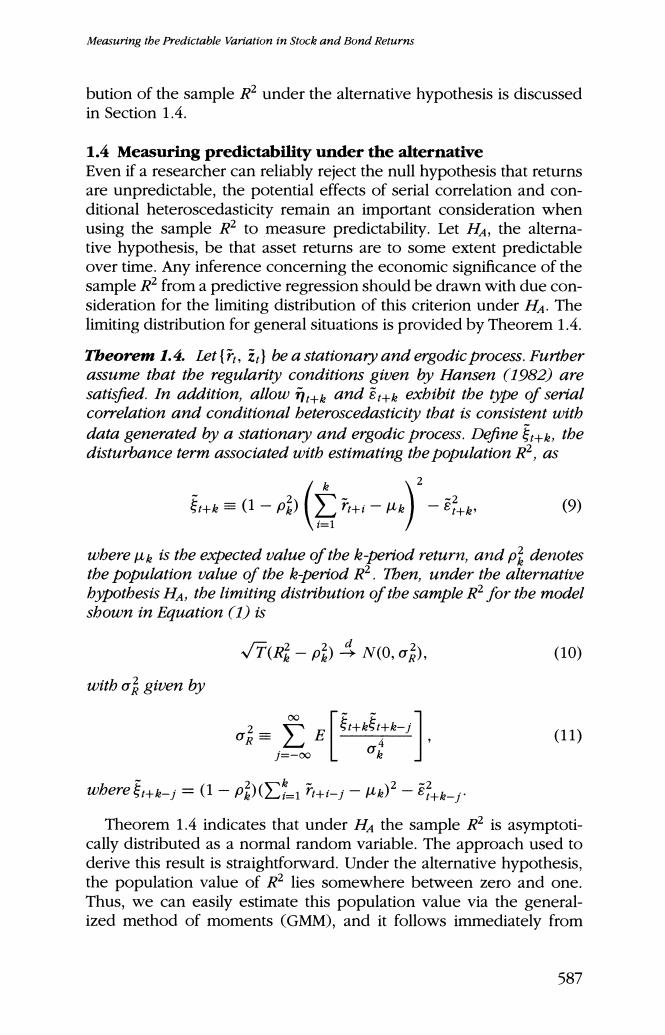正在加载图片...

Measuring the Predictable Variation in Stock and Bond Returns bution of the sample R2 under the alternative hypothesis is discussed in Section 1.4. 1.4 Measuring predictability under the alternative Even if a researcher can reliably reject the null hypothesis that returns are unpredictable,the potential effects of serial correlation and con- ditional heteroscedasticity remain an important consideration when using the sample R2 to measure predictability.Let HA,the alterna- tive hypothesis,be that asset returns are to some extent predictable over time.Any inference concerning the economic significance of the sample R2 from a predictive regression should be drawn with due con- sideration for the limiting distribution of this criterion under H4.The limiting distribution for general situations is provided by Theorem 1.4. Tbeorem 1.4.Let(r,i)be a stationary and ergodic process.Furtber assume that the regularity conditions given by Hansen (1982)are satisfied.In addition,allowk and exbibit the type of serial correlation and conditional beteroscedasticity that is consistent with data generated by a stationary and ergodic process.Define k the disturbance term associated with estimating the population R-,as 5+≡(1-p哈) (- (9) wbere uk is the expected value of the k-period return,and pdenotes the population value of the k-period R2.Then,under the alternative bypotbesis HA,the limiting distribution of the sample R-for the model shown in Equation (1)is √T(R路-)号N0,o), (10) with o given by E (11) 0bere专+k-j=(1-p爱(∑17+i--ue)2-品+k- Theorem 1.4 indicates that under Ha the sample R2 is asymptoti- cally distributed as a normal random variable.The approach used to derive this result is straightforward.Under the alternative hypothesis, the population value of R2 lies somewhere between zero and one. Thus,we can easily estimate this population value via the general- ized method of moments (GMM),and it follows immediately from 587